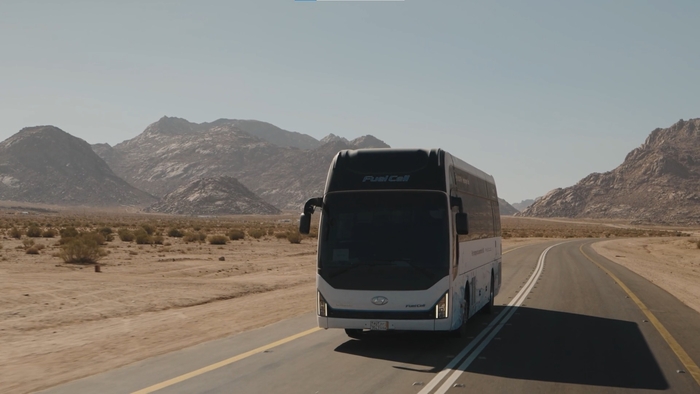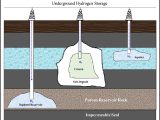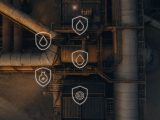
Hydrogen Fuel Cells Drive Hyundai’s Universe FCEV Bus Through NEOM’s High-Altitude Trojena
August 4, 2025Back in mid-May 2025, Hyundai Motor Company, alongside NEOM and its energy arm Enowa, made waves with a high-altitude demo of its Universe FCEV hydrogen fuel cell electric bus. From May 17 to 27, they put this heavy hauler through its paces across the rugged slopes of Trojena in Saudi Arabia’s massive smart-city project. It was the first real-world test of a heavy-duty hydrogen vehicle above 2,000 meters, proving that zero-emission technology can handle more than just smooth city roads.
Contextual Backdrop: NEOM and Trojena
Launched under Saudi Vision 2030, NEOM is a multi-billion-dollar push to diversify the kingdom’s economy with cutting-edge urban and energy initiatives. Nestled within this futuristic vision is Trojena, a year-round mountain retreat boasting peaks over 2,000 meters, winding ski slopes, and adrenaline-pumping roads. By weaving in smart green infrastructure, NEOM showcases next-gen hydrogen infrastructure and mobility solutions built to tackle thin-air, steep-terrain challenges.
Key Highlights
- Route: From NEOM’s core business district up to the Trojena base camp at 2,080 meters.
- Vehicle: Universe FCEV hydrogen fuel cell electric bus equipped with adaptive “Notice Compensation Map” tech.
- Infrastructure: The region’s first heavy-duty hydrogen refueling station, courtesy of Enowa.
- Duration: May 17–27, 2025 trial window.
- Objective: Prove hydrogen mobility can conquer high-altitude, steep-gradient terrain.
- Partnerships: MoU signed in September 2024 between Hyundai and NEOM’s Mobility sector.
Conquering the Summit: Technical Insights
The heart of the Universe FCEV is its high-pressure hydrogen tanks feeding a fuel cell stack, where hydrogen meets oxygen to whip up electricity—leaving only water vapor in its wake. Hyundai’s smart “Notice Compensation Map” steps in to tweak power output and thermal control when oxygen levels dip at 2,080 meters. During the Trojena runs, the bus tackled hairpin turns and steep grades without missing a beat, showing that reliable hydrogen fuel cells can thrive even when air density drops by over 20%.
On-board sensors logged everything from stack temperature and hydrogen flow to power output, giving engineers gold-standard data to fine-tune the system. Plus, refueling at Enowa’s station matched heavy-duty benchmarks, keeping downtime to a minimum—a clear nod to the practicality of hydrogen for regular, scheduled transport.
Complementary Advances: Building The Network
Enowa’s new hydrogen station, powered entirely by green sources, delivered on-demand fueling at pressures fit for heavy transport. This isn’t just a one-off—it’s the cornerstone of a future-proof ecosystem, from passenger shuttles to freight and tourism fleets. By nailing seamless refueling in a remote, mountainous setting, they’ve peeled back one of the largest hurdles in rolling out wide-scale hydrogen infrastructure.
Partnership Foundations: From MoU to Mountain Trial
In September 2024, Hyundai Motor Company and NEOM’s Mobility sector signed an MoU to team up on hydrogen transport solutions—research, infrastructure, and ops frameworks for extreme environments. Six months later, the Trojena trial delivered on those promises, blending Hyundai’s engineering chops with NEOM’s futuristic flair. With Enowa handling hydrogen production, storage, and dispensing, this public-private trio is proving how collaboration can smash through logistical and technical roadblocks for industrial decarbonization.
Historical Traction in Hydrogen Mobility
Hyundai has been pouring resources into hydrogen fuel cell research since the late ’90s. After launching the ix35 Fuel Cell in 2013, they followed up with the NEXO SUV and the Xcient Fuel Cell truck, each generation upping the game on efficiency, durability, and cost. The Universe FCEV bus stands on these decades of R&D, taking heavy-duty applications to new heights—literally—and showing that fuel cell electric vehicles are ready to scale.
Strategic Impacts: Decarbonizing Beyond the Metro
This high-altitude showcase dovetails perfectly with Saudi Arabia’s push to slash carbon emissions and wean off oil. For Hyundai Motor Company, it cements their spot as frontrunners in hydrogen mobility, alongside the NEXO and Xcient programs. For NEOM, it’s another feather in the cap as a zero-emission technology showpiece—one that could lure fresh investment into sustainable energy and industrial decarbonization projects. Urban planners and policymakers worldwide will be taking notes, eyeing how this model could work in other rugged locales, from ski resorts to mining zones.
The Road Ahead
With Trojena checked off, Hyundai and NEOM are already plotting the next phase: rolling out hydrogen taxis, service vehicles, and tourist shuttles. Enowa’s refueling network will expand in lockstep, tapping into Saudi Arabia’s renewable energy bonanza to churn out more green hydrogen. As stations pop up, zero-emission heavy transport isn’t just a dream—it’s gearing up to be everyday reality, pushing NEOM—and the kingdom—closer to their Vision 2030 decarbonization goals.
About Hyundai Motor Company
Founded in 1967, Hyundai Motor Company is a top South Korean automaker within Hyundai Motor Group. They’ve led the charge in fuel cell electric vehicle innovation since the late 1990s, rolling out the NEXO SUV and Xcient Fuel Cell truck, and are steadfast in pushing the bounds of long-range, sustainable energy transport.
Access the YouTube video here.



 With over 15 years of reporting hydrogen news, we are your premier source for the latest updates and insights in hydrogen and renewable energy.
With over 15 years of reporting hydrogen news, we are your premier source for the latest updates and insights in hydrogen and renewable energy.